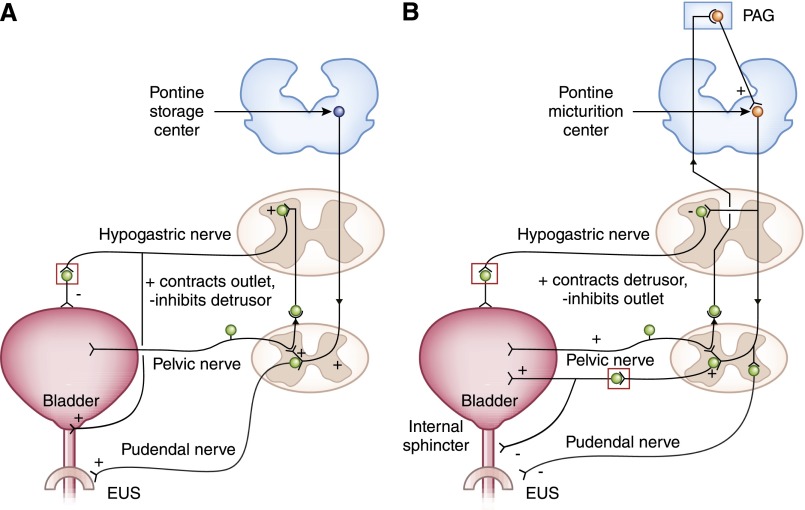Figure 3.
Neural regulation of the storage/accommodation phase and the voiding phase. (A) Storage reflexes. During filling, there is low-level activity from bladder afferent fibers signaling distension via the pelvic nerve, which in turn stimulates sympathetic outflow to the bladder neck and wall via the hypogastric nerve. This sympathetic stimulation relaxes the detrusor and contracts the bladder neck at the internal sphincter. Afferent pelvic nerve impulses also stimulate the pudendal (somatic) outflow to the external sphincter causing contraction and maintenance of continence. (B) Voiding reflexes. Upon initiation of micturition, there is high-intensity afferent activity signaling wall tension, which activates the brainstem pontine micturition center. Spinobulbospinal reflex can be seen as an ascending signal from afferent pelvic nerve stimulation (left side), which passes through the periaqueductal gray matter before reaching the pontine micturition center and descending (right side) to elicit parasympathetic contraction of the detrusor, and somatic relaxation via the pudendal nerve. EUS, external urethral sphincter; PAG, periaqueductal gray matter. Modified from reference 102 as follows: 1) changes to the color and shape of spinal cord elements; 2) pontine storage center and pontine micturition center colored differently to indicate slightly different neuronal populations; 3) (A) new neural connection between the hypogastric nerve and the bladder outlet, with + and − signs to indicate contractile or relaxative signals, respectively; and (B) several new + and − signs, which were not included in the original.

